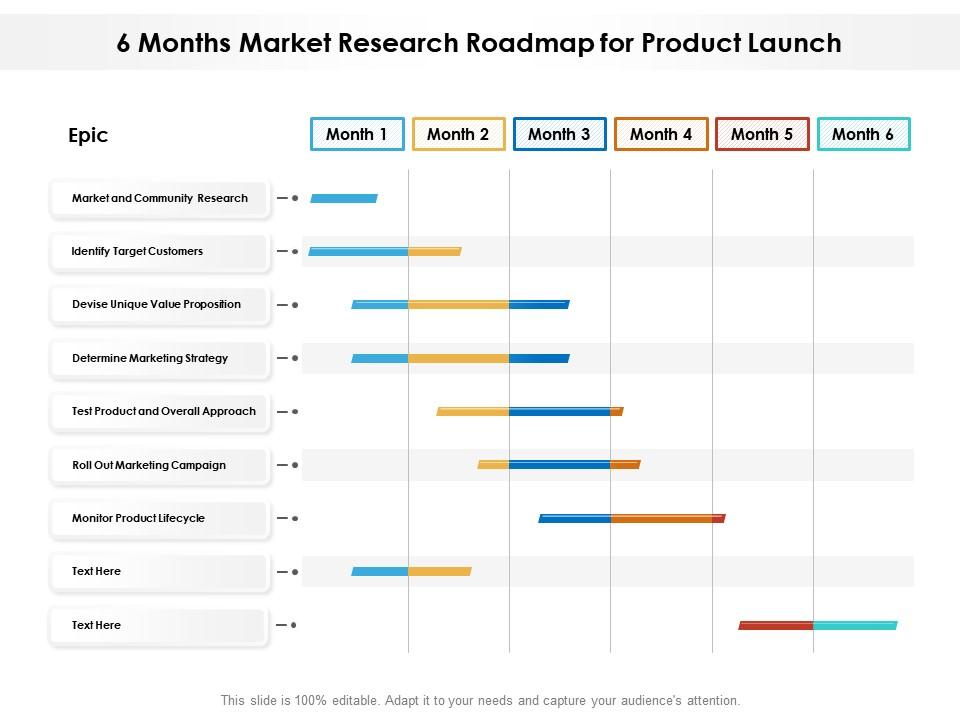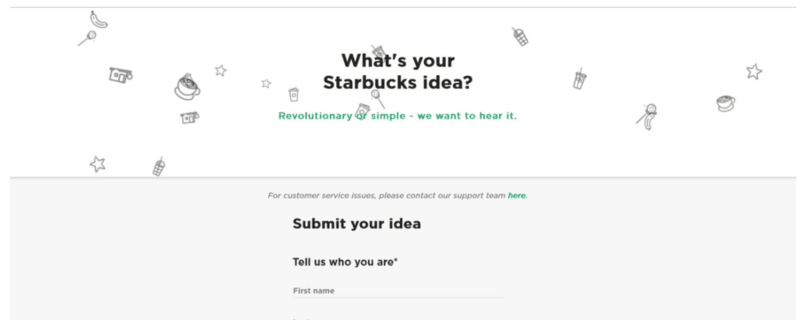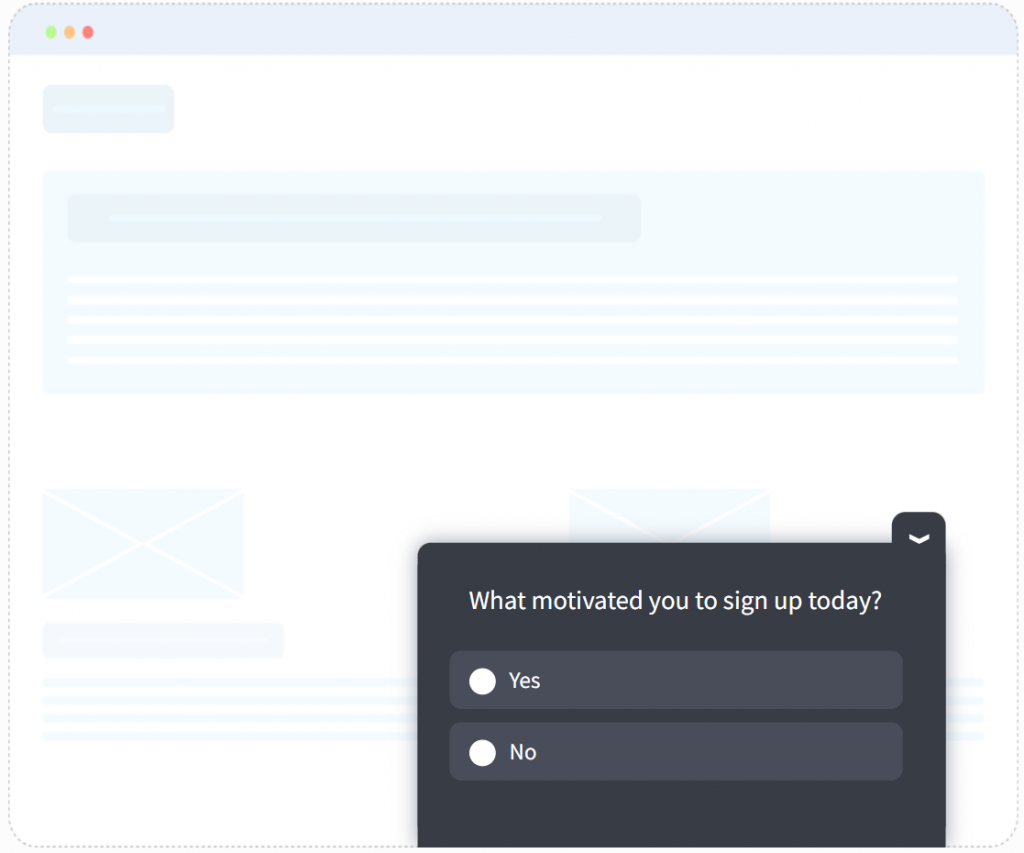You’ve probably heard about market research a million times now. That’s because every business needs to conduct successful market research to get a proper understanding of their customers, prospects, suppliers, competitors, and many other factors.
Several essential elements like competitors, potential customers, and other market players, when combined, make up a market. You need to effectively research this market to spot customer perspectives, buying patterns, and market trends to stay ahead of the curve.
According to Uplers, 90% of the agencies that saw an increase in leads were actively spending on market research via multiple channels. Out of those, 29% were small-scale businesses.
Successful businesses conduct market research for various purposes, including:
- Identifying potential customers
- Learning more about existing customers
- Uncovering new markets
- Analyzing the level of competition.
- Make informed decisions with their products and services.
At this point, you probably find market research a bit overwhelming and obscure.
But the benefits of market research lie in making sense of this obscurity. We will take this opportunity to separate fact from fiction and give you a crystal clear picture of how successful market research drives business growth.
You can’t base research on just hypotheses and assumptions. That’s a recipe for disaster right there. Instead, learning from customers is the best way to go about it to respond to their needs and wants. After reading this blog, you’ll understand how this works and how you can have a kickass market research program to make your business grow.
What do you mean by Market Research?
Market research can be defined as a process that aims to determine the viability of a product or service in a specific market with the help of research conducted directly with potential customers. The market research also allows the organization to better understand its target market by uncovering opinions and insights from customers about their preferences and interests.
Market research can either be conducted by organizations in-house or outsourced to other organizations specializing in market research.
Bonus Read: 12 Best Market Research Tools
Importance of Market Research
We earlier mentioned that market research questions provide important data for different operations like product development, marketing campaigns, sales pipeline, and more.
But to what extent?
Let’s break it down to individual processes and understand the impact customer insights from your market analysis survey can have on them:
To Know Your Target Market
Understanding your target audience is the fundamental aspect of market research, be it a new target market or existing customers. If you know what marketing research survey questions to ask your target market, you can identify different customer types’ unique traits and preferences.
The data can help you segment the users based on demographic, psychographic, geographic, and other attributes. These include their behavior, purchase preferences, age, location, habits, delights, frustrations, and more.
You can then create various customer personas and fuel your sales strategies to maximize ROI.
Case study – How Avis increased its revenue per customer
Avis, a leading car rental company, was looking to enhance customer experience by offering useful car add-ons like navigation systems, child seats, insurance, etc., to customers with their booking. So, it reached out to AWA Digital to find a way to promote these products and increase its sales.
AWA digital implemented customer research campaigns using targeted surveys to determine which add-ons were popular among the customers and why.
Using these insights, the team added an interstitial pop-up just before the booking page to show relevant add-ons to the customers.
This simple update dramatically increased the sales of add-on items and helped Avis generate more revenue per customer.
Read the entire case study here.
2. To Plan the Product Roadmap
A product roadmap is a visual representation of the current status of your product and planned updates over time. It shows a high-level summary of planned activities and priorities for different teams to take the product to the next level.
Steve Jobs famously said – “You’ve got to start with the customer experience and work backward to the technology. You can’t start with the technology then try to figure out where to sell it.”
And market research helps to align your product strategies with customer demand. Using targeted marketing survey questions, you can gauge what new features or functionality customers want to see in your products.
It helps to plan product development strategies based on customers’ consensus to prioritize the ideas that can have the most impact on customers and replace intuition-based approaches with data-backed decisions.

Customers’ demands change with market trends and technological advancements. That’s why your product map also needs to evolve constantly with time to reflect these changes in your product development cycle.
By designing targeted market research questions to ask the customers, you can uncover their expectations to deliver optimal product solutions.
That’s what our next case study demonstrates.
Case study – How customer research drives Twilio’s operations
Twilio, a cloud communications platform places customer discovery and research at the core of their product development strategies. It helps its teams to anticipate customer needs in a constantly changing market.
Lack of time and budget are the two biggest challenges that the company faces in its product development cycle. So, the team uses a targeted market research questionnaire for a product to understand the challenges the customers face today and the ones they will face tomorrow.

With an abundance of ideas and no time to test them all, the feedback data from surveys is used to prioritize the hypotheses to run the tests. It makes the process more efficient and effective in producing positive results.
This data-backed approach is used across 18 different teams at Twilio to release new functionality every week and deliver optimal solutions to the clients.
Read the complete case study here.
3. To Reduce Acquisition Costs
Your customer base consists of multiple customer segments with different preferences and purchase potential. That’s why you cannot sell to everyone and need to find the right audience for your products.
If an acquired customer doesn’t bring in more revenue than it costs to acquire them, it will increase your acquisition costs over time.
We don’t want that, do we?
For example, let’s say you are targeting the entire market population using the same campaign. If your acquisition cost per customer is $300 and you acquire 20 customers from one campaign, you need to make more than $6000 to register profits.
The difficulty is you don’t know about these customers’ purchase behavior and capacity, so you cannot be sure if you will reach your goals. It adds unnecessary risks to your marketing ventures.
But, if you were targeting a specific segment with high income, regular shopping habits, or proven history of brand loyalty, You can obtain better results.
Now, the question is –
How will you separate these potential long-term customers from one-time buyers and high-value targets from other segments?
One way to do this is by building customer personas using the data from the market research survey questions. A buyer persona defines different attributes of a particular customer segment so you can hone in on the right audience to funnel your marketing efforts.
Here’s what a typical persona includes:
- Target regions
- Target demographic (age, marital status, gender)
- Ideal psychographics (hobbies, social channels, activities they indulge in, goals)
- Preferred interaction channels
- Favorite brands and products
- Total revenue till date
- Estimated lifetime value
Once you have a clearer picture of different customers, you can find high-value prospects with the potential to be long-term customers looking for product solutions that your business offers.
You can then design the correct pitch using the market research data to bring in these customers and control the overall acquisition costs.
For example:
- Plugin the demographic and psychographic data into CRM software like BIGContacts or Salesforce to convert high-value targets.
- Use your CRM to create segmented lists of prospects based on estimated value, location, current status, and more. Then target these groups individually with personalized value propositions to increase conversion rates.
- Identify their preferred mode of communication and technographic inclinations to find the right opportunities to pitch your product offering at the precise moment.
Even if acquiring and retaining such customers costs more, their overall revenue can balance the acquisition costs to deliver higher profits.
4. To Design Targeted Marketing Campaigns
By knowing how your target audience behaves and interacts with your business, you can find the exact opportunities to target them with personalized campaigns.
For example:
- You can use mail campaigns to target website users with app-exclusive offers to encourage them to download your app and improve app adoption.
- Add in-app broadcast messages about upcoming offers, exclusive membership benefits, and other incentives for new users to push them towards the end of the funnel.
- Create multiple landing pages to target different customer types.
- Design location-based ad campaigns with personalized value propositions based on audience preferences and problems at each location.
Case Study – How Canon’s campaigns generated 700% ROI
AWA digital was tasked by Canon, one of the biggest electronics companies worldwide, to assess and increase the demand for their products in different geographies. So, the AWA team conducted customer research using target market survey questions and discovered the following attributes about customers’ purchase behavior and reservations:
- In some regions, people were reluctant to spend money on a Canon camera as they weren’t sure if Canon was an authoritative brand.
- In other regions, authority was not as important to the users.
Using these insights, AWA optimized the ads campaigns’ messaging for different locations to include what consumers deemed important purchase factors.
The results?
With in-depth customer feedback, Canon generated an overall ROI of 700% in all regions using personalized campaigns to target the audience.
5. To Improve Brand Awareness
Whether you are into soft drinks or not, You probably would have heard of Coca-Cola’s 2011 Share-A-Coke ad. This single campaign put the Coke brand back on the map and reversed the 10-year steady decline in sales in the US.
Coke understood what motivates their customers and delivered a product offering that appealed to the masses to increase its brand equity- the excitement to get a Coca-Cola bottle with their name on it.
How did they do it?
In 2011, Coca-Cola rolled out its share-a-coke campaign in Australia. The company debranded the traditional Coke logo from the bottle and replaced it with the phrase “Share a Coke with” followed by a name.
The campaign used the list of the country’s most popular names (nicknames). The purpose was to make people go out and find the Coke bottle with their name on it and share it with their friends. The campaign was subsequently rolled out in 80 countries.
How did it impact Coca-Cola as a brand:
- In Australia, it’s estimated that the campaign increased Coke’s share by 4% and increased consumption among young adults by 7%.
- #ShareACoke became the top trending hashtag on Twitter globally and received over 1 billion impressions.
- In the USA, the campaign increased Coke’s market share by over 2% and brought 11% more sales compared to the previous year.
It’s not limited to big brands only.
Understanding the customers and placing your product’s value offering along with their habits, lifestyle, and behavior can help you extend your brand’s reach.
Today, there are multiple touchpoints to connect with your customers and map their journey to uncover their issues, motivations, and fears to address in your campaigns.
For example:
- Monitor brand mentions on social media and engage with the users to cultivate an online community and promote your brand.
- Reach out to satisfied customers and turn them into your brand ambassadors.
- Use targeted ad campaigns that connect people’s emotions and general behavior to imprint your brand’s image in their minds.
Types of Market Research
Any research you are planning to conduct can always be clubbed into one of the four main types of research. These types are:
1. Primary Research
Primary research stands for the type of research where first-hand data and information is collected. The researcher acquires this type of data without using or citing any other sources. Primary research involves indulging with the respondents at different levels to gather information.
Examples of primary research include:
- Surveys
- Polls
- Focus groups
- Interviews
2. Secondary Research
Unlike primary research, secondary research involves gathering second-party or third-party information from different sources.
This type of data already exists in the market, and the researchers have to look for suitable sources to uncover the data that will be relevant to them.
To give you a perspective, Uplers conducted a study to show the ‘Impact of Covid-19 on digital agencies’, which involved the data from 130+ organizations. A survey report was then created for the same.
The below infographic depicts how Covid-19 has impacted the approach of organizations towards outsourcing. The report, published online by Uplers, uses data from already conducted research. Hence it can be termed secondary research.
Examples of secondary research include:
- Articles
- Newspapers
- Online sources
- Infographics
- Ebooks
3. Quantitative Research
Quantitative research involves collecting numerical data for the purpose of statistical analysis.
Unlike qualitative research, this involves gathering accurate and quantifiable data that marketers can use to find patterns and averages, test hypotheses and relationships, make predictions, and generalize results to a broader population.
Like qualitative research, quantitative research can also be primary and secondary but is specifically tailored to collect numeric data and responses. Quantitative data collecting methods involve:
- Controlled or manipulated experiments
- Surveys
- Systematic observation
- Secondary research
Bonus Read: Qualitative vs. Quantitative Research
4. Qualitative Research
When the data collected cannot be measured or quantified; it can be termed qualitative research. Qualitative research can be both primary or secondary and involves a firm understanding of the respondents’ concepts, opinions, and experiences.
It also aims at finding out and analyzing consumer behavior that is entirely subjective and cannot be quantified for assessment.
Quantitative research will help you discover what’s happening while qualitative research will help you uncover why it’s happening to give you the right insights in market research.
Qualitative research involves asking questions like:
- What made you buy our product?
- How satisfied were you with our product/service?
- What features did you like about our product/service?
- Would you consider recommending our brand to your family and friends?
Now that we know about the different types of research, let’s take a look at the role of customer feedback in market research.
The Fundamentals of Feedback and Surveys
Collecting feedback from customers is one of the most important things you can do as a business owner. Feedback gathered as part of market research helps you in product development, conducting business operations, and launching marketing campaigns, yet it remains one of the most overlooked activities in the business.
Here are five reasons why you should focus on collecting customer feedback:
- Understanding your customers
- Engaging with your customers
- Product development and improvement
- Acquiring positive testimonials and reviews
- Evaluation and moving forward.
But did you know, surveys are an excellent way to collect feedback?
Surveys are arguably the best and most effective way of collecting genuine feedback, reviews, and testimonials from customers.
This information is especially important for businesses.
Why?
Because business owners can assess customer feedback and identify bottlenecks and deficiencies in their products and services to improve their offering and elevate the customer experience.
Survey responses can provoke or confirm strategic business decisions by providing unbiased data to guide decision-making. Customer feedback collected from research surveys indicates what they think and feel about your brand.
But surveys don’t work in isolation.
It would be best if you had a comprehensive online feedback tool to collect all sorts of data from all sorts of respondents. Using a carefully designed survey will uncover insights that will prove to be crucial for your business at multiple levels.
For instance: Qualaroo is one of the best online market research and customer feedback tools out there in the market. With its easy-to-use interface and professionally designed research templates, you can set up your surveys and start collecting feedback within minutes. It also supports advanced targeting that allows you to segment your audience and conduct research strategically.
Qualaroo also offers some of the best research functionalities in the form of NPS, CSAT, CES, and UX surveys to:
- Test prototypes for new product launches
- Analyze customer sentiments with Voice of Customer surveys to improve customer experience
- Create buyer personas to understand your perspective customers’ needs & wants
- Develop customer journey maps to learn where to capture their interest and solve their pain points
- Develop hypotheses to conduct A/B testing for Conversion Rate Optimization and more.
- To know more about why feedback and surveys are important, take a look at
Related Read– Benefits of Customer Feedback: 3 Reasons Why You Can’t Ignore It
FREE. All Features. FOREVER!
Try our Forever FREE account with all premium features!
Market Research Case Studies: Learn From the Best
Companies all around the globe conduct business market research at various magnitudes, and they are highly dependent on a well-rounded research process. Here are some of the most prominent organizations with their market research success examples:
1. Starbucks Coffee Company
Starbucks is not only the largest and the most successful coffee brand in the world but also the most popular name that comes up whenever you think of coffee. A major part of their success story is backed by successful market research practices.
However, much of their secret to reaching this position can be delegated to the value of their successful market research.
Starbucks’s market research approach includes:
- Tracking cultural trends
- Gathering customer feedback
- Monitoring social media
- Regular product testing

Over the past decade, Starbucks has deployed its own ‘My Starbucks Idea Platform’ to conduct market research by gathering customer feedback. This platform allows their customers to freely pitch new ideas or modify existing products without any limitations.
This is how Starbucks’ innovation and product development are fueled by always keeping in mind the customer’s perspective, and the company has presented one of the biggest market research success examples.
2. Apple Inc.
Apple is the most successful technology company that has ever existed, and they made it possible by constant product innovation, market research, and understanding what their customers want

Apple deeply appreciates their market research business, and they have actively demonstrated it through their in-house research team. Apple’s research panel is called “Apple Customer Pulse”, an online community dedicated to catering to the needs of consumers through data analytics.
Apple focuses on increasing customer loyalty and retention through successful market research and increasing its NPS score at the same time.
This is done primarily through:
- Relieving purchase anxiety from customers
- Paying great attention to details
- Delivering value and not just the product
- Collecting feedback at every step
As a result, Apple was able to reach an NPS score of 72 in 2017, which is much higher than the global average.
Apple conducts research through multiple online survey platforms. As a result, they have effectively laid the foundation for new product development and modification to their existing products for a better user experience.
Related Read: The Best Ways Big Companies Use Customer Feedback
3. Twilio
Twilio is an American cloud communication platform that works in an ever-evolving market. To expand under such circumstances, the organization has integrated market research as its core business strategy to match the pace with the oncoming challenges.
Anticipating customer needs and critically understanding them is the critical focus of Twilio as it defines its overall business strategy.
Twilio deployed Qualaroo as their market research tool to directly connect with the customers and collect feedback seamlessly. The organization then used the data to test different hypotheses and came up with the best possible alternative.
Here’s how Twilio conducts market research using Qualaroo:
- Asking specific consumers about how they would like to achieve their objectives.
- Planning for user testing and product feedback interviews for the customers.
- Collecting data that is to be shared between groups to account for differences in opinions.
- Providing step-by-step guidance about the type of support that new customers will receive.
Conducting market research using Qualaroo allowed Twilio teams to ditch opinion-based ideas and jump to data-based insights in no time. Overall, this made the customer discovery process much more efficient and increased the chances of yielding a positive result.
Related Read: Case Study- Twilio’s Process for Studying Customers
Market Research Questions You Need to Ask
An effective way of scaling your market research for business is by knowing what questions to ask at what point in time. Right questions targeted at the right people at the right time will deliver much better results. Here are some examples:
How your customers found out about you
- How did you first hear about us?
- What made you choose us?
- How did you find our website?
- What search term did you use to find us?
Purpose of their visit
- What brings you to our website today?
- What were you hoping to find on this website?
- What products/services are you looking for?
Uncover reasons behind bounce rate
- Does this website meet your expectations?
- Did you find what you were looking for?
- Would you revisit this website in the future?
Pricing
- Was our pricing compelling to you?
- Do you think our prices justify the value we deliver?
- Would you consider placing an order at this price?
Online visibility
- Have you heard our brand name before?
- When was the first time you heard about our brand?
- Do you recall seeing an advertisement for our brand before?
Related Read– If you want a more detailed list of survey questions, you can find it at What Survey Questions Should I Ask?
How Can Market Research Help Grow Your Business
Now that you know the different uses of market research and how important it can be for business owners and organizations, let’s look at how it will help you grow your business.
1. Provides Competitive Advantage
Businesses worldwide are facing considerable challenges in the form of new market entrants, which is significantly surging the risks of losing market share and an overall drop in business.
Businesses conduct thorough research of their target markets by analyzing customer demographics, historical sales data, and companies performing well to understand their position in the market.
The most common form of market research is competitor analysis that every business conducts at some point.
Here, the marketing team of the companies build a definitive list of all the competitors in the target market and then determine their strengths and weaknesses, which your business can capitalize on.
Here are some of the details that you can research about your competitors:
- Sales volume
- Market share
- Efficiency
- Suppliers
- Labor cost
- Strengths and weaknesses
- Your window of opportunity for market entry
- The importance of your target market to your competitors
- Any barriers that may stop you from entering the market
- Indirect or secondary competitors who may impact your business
By having a clear picture of the companies that lead your industry and with a bit of digging, you can effectively exploit their vulnerabilities and gather market share by your superior offering.
Finding out Voice of Customer will help you even further as it represents the collective sentiments of how your customers perceive the value of your product and services.
Voice of Customers acts as a market response to your offerings, and you can use it to optimize your website, improve your customer service and announce new product features and service plans. It will also help you in better positioning yourself in the market with respect to your competitors.
2. Helps Identify Opportunities in the Marketplace
Effective market research widens your perspective and opens you up to new opportunities available in the market.
For instance: you can quickly uncover new geographic regions for expansion and test market readiness for a new product by gathering data about customer preferences, product availability, rate of adoption, and many other factors.
Existing data can be gathered and analyzed to capture the possible opportunities like government publications, previous reports, and statistics. The information that would be useful in identifying opportunities includes:
- Market size
- Potential market share
- Demographics
- Major suppliers
- Market competitors
- Market dynamics
Getting data about the market is the first stepping stone towards the expansion process of both the market and the product line. Successful market research will effectively help you size up the market and determine the optimal business strategy for maximum impact.
3. Helps in Testing for Success
Testing for success simply means determining whether or not your new product/service will connect with your audience.
Business market research is an effective way of doing that because you can test your ideas before you go pedal to the metal with them.
Businesses can easily identify which product concepts and campaigns truly resonate with the audience by asking their opinions and preferences through surveys. This will allow the business to ensure success the first time around and save money from potential losses.
For instance: the image below depicts that before the full-scale launch of your software product, you can conduct a pilot test to check the viability of your application and ensure that everything is in place.
Gathering a group of users and allowing them to test every feature is an effective way to minimize or terminate any shortcomings you may have had before.
Here is a list of things to keep in mind before you test your concept:
- Create a detailed list of concept testing questions
- Conduct your share of secondary research before you ask your questions
- Contact publications and trade associations to see if a similar concept had surfaced before and collect all the available data
- Get a broader sample audience for more accurate and reliable data.
The bottom line is that testing your idea before its full-scale launch is the ideal step to take. It is a ‘sure shot’ way of affirming that your product will yield the desired results once it is launched, resulting in significant business growth.
Related Read: What is AB Testing?
Watch: Building a brand using feedback and user research
Read Also: 5 Tips to Conduct User Research
4. Provides a Better Understanding of Your Customers
A key factor for the success of every business consists of a proper understanding of the target market and the customers to reach them in a much better way. Gathering customer insights delivers a wealth of information to marketers, including purchase trends and high-selling services in various demographic regions.
Market research will help you assess this information and anticipate what the customers are looking for and how the market will react or shift in the near future.
Here are some of the customer information that you should typically look to answer while conducting market research:
- How old are they?
- Are they male or female?
- Where are they located?
- What is their family income?
- Do they have children?
- What is their marital status?
Successful market research will easily help you identify every detail about your targeted customers, using which you can effectively plan your strategy.
Even if you have an established business, paying close attention to your customers will help you promptly identify rapidly changing customer needs and market trends. This can give you a significant advantage over the competition.
The deployment of Customer Relationship Management or CRM systems helps marketers get a better sense of their target audience, find new customers, and identify audience trends and patterns for marketing campaigns.
To do this, you can deploy CRM software for small business like BIGContacts that’s specifically designed to simplify CRM, email, and contact management, allowing small teams to grow their business. It allows you to track sales pipeline and commissions, automate marketing and sales emails and customize as per your sales process.
Therefore, better contact management and customer relationship will give you a much better understanding of your customers.
5. Develop Relevant Products and Services
As the old saying goes, ‘Change is the only true constant.’
And this stands very well in the 21st century for businesses and the marketing industry globally. In simple terms, all businesses need to anticipate and adapt to the rapid changes to stay relevant in the market.
Market research greatly supports this cause by identifying the customers’ evolving needs and analyzing how the competition is reacting to the change. This will help you better strategize your new products and services to gain a competitive edge over the other market players while ensuring longevity.
For instance: the growing environmental and sustainability concerns have led almost all the major automobile brands to transition towards electrically powered vehicles. Customer feedback allowed automobile manufacturers to uncover the growing reluctance in consumers towards purchasing Petrol and Diesel cars. It also helped uncover the shift in preference towards clean energy, which made the transition happen.
Market research helped the automobile industry adapt to this significant power source change and develop vehicles by highlighting the general consensus and the cause supported by the majority.
Two prime examples of not adapting to change come from previous market leaders like Blackberry and Kodak. The companies failed to take advantage of proper market research to develop relevant software and hardware for their customers. They didn’t adapt to the changing technology, which resulted in them losing almost all of their market share.
The quickest way to understand the market and ensure relevancy is to run a tracking or index survey. Running these surveys on a regular basis and analyzing them through the reporting system will let you quickly catch the upcoming customer needs so that you can tailor your products and services accordingly.
Watch: How to Create a User Research Survey
Bonus Read: How to Create a Survey – Detailed Guide
6. Spot Emerging Trends
Market changes are so rapid that keeping pace with them is not an easy task.
Market research for businesses is conducted not just to analyze the size of the market but also to determine if the market is trending up or down.
Businesses should acknowledge that they have to move with the times to stay ahead of the competition and ensure long-term business planning in an ever-changing industry.
This is where market trend analysis is used.
Marketers study and compare the industry data over a set period to recognize any consistent trends that could prove to be helpful in mapping business strategy. Market trend analysis is a significant part of market analysis, and there are a few things to keep in mind while conducting market trend analysis:
- Keep track of publications and industry influencers
- Go through all the relevant industry research and trend reports
- Deploy any available analysis tool to determine industry behavior accurately
- Always listen to your customers
- Observe your competition
Consumer habits and behavior heavily influence market trends, and one cannot simply predict where the trend line would go. Conducting market trend analysis by analyzing industry data is crucial to pinpoint the trends accurately and spot newly emerging trends for continuous business growth. One way to do this is to leverage a business plan template to organize your market trend analysis and align it with strategic goals.
7. Helps in Minimizing Risk
Doing business without any market research is like sailing without a compass.
Successful market research is a catalyst that helps reduce the risk by identifying options, increasing confidence, and also providing an objective perspective to grow your enterprise. And when you are armed with research, you can take even more necessary risks to grow your business.
Market research also proves beneficial in tumultuous times because expert industry analysis can help you dodge costly mistakes and even forecast potential market fluctuations to save your finances.
Minimizing risk through business market research is primarily dependent on two factors:
- Finding the right approach to conduct market research
- Assessing cost-effective research
By having the correct data at your disposal, you will be better equipped to evaluate potential risks and make decisions that will pay off in the grand scheme of things. Even the data from customers who leave can be beneficial in understanding what went wrong and what can be improved.
Market research is extremely crucial when you’re facing a ‘make or break’ situation like a new product launch expanding into new markets. You can’t jump into it and neither can you wait for years to learn how to do the right thing by simply hypothesizing.
Which is why having a good idea of what the customers may want help in modifying the offerings to retain them.
Popular online popup tools like Picreel are designed to do just that. Designed to capture leads even from prospects who are leaving, it helps you identify your most profitable segments and even set up A/B testing to find out exactly what they respond to.
When you have gather the right data using Picreel, you can create customized campaigns to target the right users and maximize conversions.
Watch: How Picreel helps engage and gather data
8. Helps in Evaluating Business Success
Whether you have a newly started business forming an LLC in your state or are in the expansion stage, successful market research will help you at every stage.
It includes understanding the vital components of your target market to increase your profits, sales revenue, return on investment, and overall business success.
Market research for businesses uncovers details about several crucial factors for marketers to understand to capitalize on them for better results. These factors include:
- Insights into existing customers
- Identifying potential customers
- Customer behavior
- Customer needs
- Identifying opportunities
- Resolving conflicts and issues
Researching data about all the above factors can help you develop product and service pricing, distribution, advertising, logistics, and many more. Also, market research will accurately guide you in starting, diversifying, or reducing business activities. You can then compare the results to the historic data for assessing or evaluating the overall business success.
Rewrite Your Business Growth Story With Market Research
Markets are rapidly evolving worldwide, and businesses need to match the pace of this evolution now more than ever. Market research is one way of doing that.
But that’s not the only reason because market research also ensures the business’s longevity by minimizing risks and identifying shortcomings. Keeping everything in mind, there are plenty of benefits of market research that businesses of all scales can benefit from.
If you need help with your market research efforts, Qualaroo is here to help you deploy surveys that give you actionable insights by asking the right users the right questions at the right time.
FREE. All Features. FOREVER!
Try our Forever FREE account with all premium features!

 We'd love your feedback!
We'd love your feedback! Thanks for your feedback!
Thanks for your feedback!







